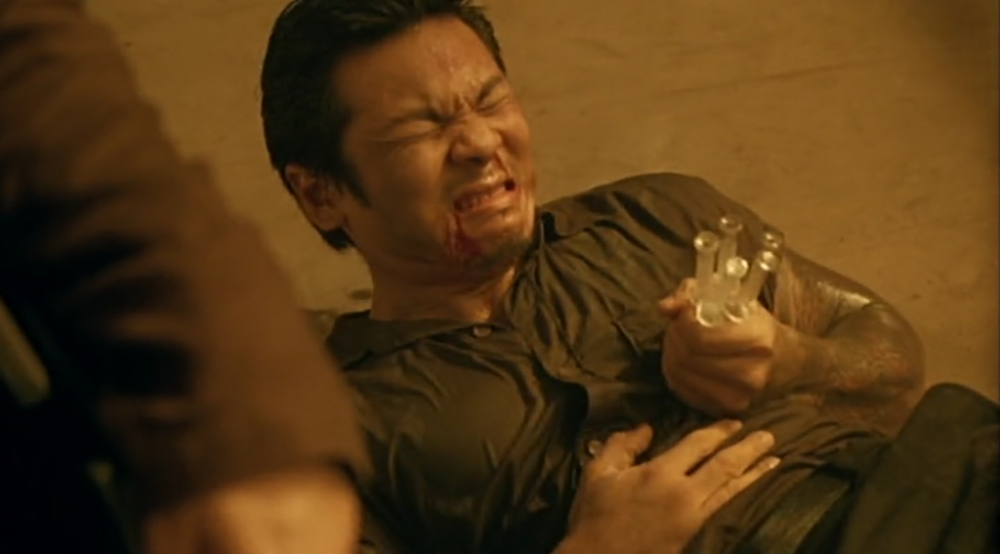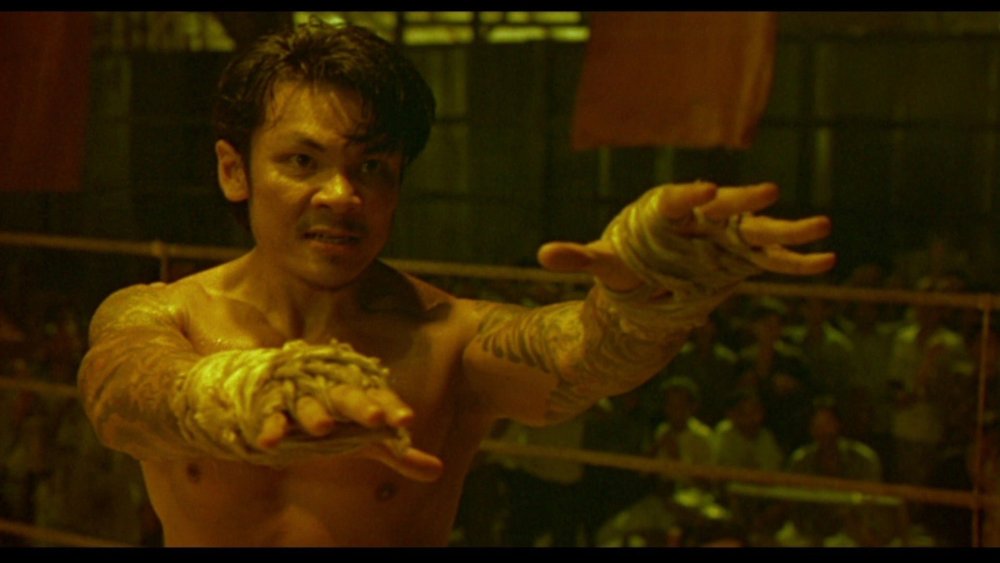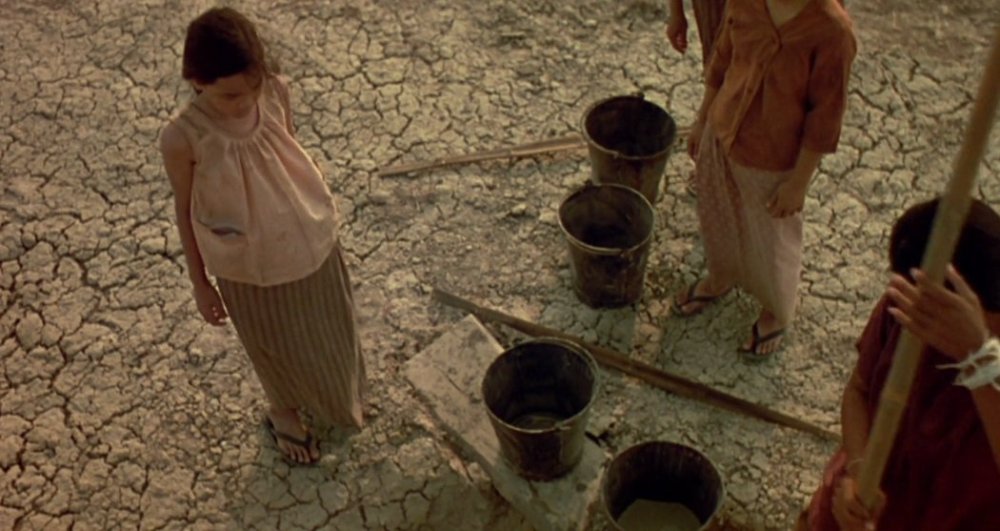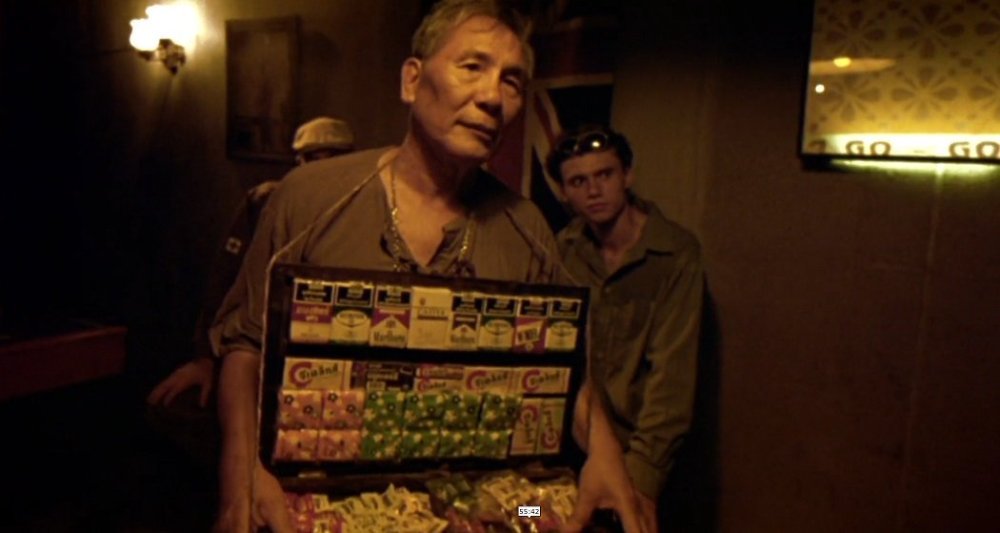Leaderboard
Popular Content
Showing content with the highest reputation on 08/21/2023 in all areas
-
Hello to All and welcome to Muay Thai Roundtable! This forum is intended to be a place for people of all levels and interest in Muay Thai to come and connect, discuss, and ask questions or offer tips from our various experiences. The Roundtable is a little bit different in that aside from posting general topics which are specifically encouraged, you can also address questions specifically to me or Emma - the idea of this forum grew out of the questions we both have received in private communications - and of course everyone is invited to respond as well. It's a community resource, and hopefully a knowledge store. We've set up some thread categories to help organize and facilitate exchanges, hopefully there will be more as we go and gather more steam. There is a general board, as well as a "women only" board, which is a place for women to discuss issues or experiences which may be too uncomfortable to voice otherwise, but also a place to help foster female Muay Thai dialogue between women. In all boards, please be respectful and considerate of each other. Some guidelines are that inflammatory comments or language intended only to incite is not permitted; respectful disagreement, requests for clarification and difference of opinion and experience are all welcome. This Roundtable is a space for us, so please make yourself at home and be polite both as a host and as a guest. Some online forums are a "Free for All" in terms of moderation and this is not one of them. This Roundtable is a heavily modified space - as such, please do not be offended if a moderator steps in, but also please do not hesitate to ask for a moderator if you feel uncomfortable, disrespected, or attacked. Speak openly, be nice. If you are new to forums be sure to read our Forum Features and How to Use Them post, as it will help make everything more interesting.1 point
-
This read will cover several topics in a cross section: Buddhism, Northern Beetle Fighting, the film Ong-Bak, Cybernetics, Animism, Ecology, Thai Clinch, Thai urban vs rural tension, Anthropology & Gambling What follows are just some notes I've taken in reading Stéphane Rennesson's article, which discusses the Fighting Beetles of Northern Thailand. Its a great piece on a form of Thai gambled fighting that few know much about in detail. Not only does it break down the rather obscure essentials, the concepts and practices of Beetle fighting, it also positions them within larger themes that help us have insight into Thai agonism, something which ultimately sheds light on unique aspects of Thailand's Muay Thai and gambling. In some senses, Thailand's Muay Thai has more meaning in common with Beetle Fighting than it does with let's say a combat sport tournament happening in the West. The article allows us to come at Muay Thai from an angle and catch aspects that we may have missed when we just assume correspondence with Western (or Global) practices of combat sports. The way that I've done this is basically passage by passage. Most of the article ends up being quoted (but its best to read it through of course). You can also jump around into any particular post as they read as their own segmented thought or focus. Wrestling Beetles and Ecological Wisdom: How Insects Contribute to the Cosmopolitics of Northern Thailand* < read it here Stéphane Rennesson Sylvie and I have strongly noted the cultural homologies, the arguable connection and insight, between Northern Beetle Fighting and Muay Thai. Both are gambling driven rites of play and contest where the "fighter" symbolizes the vitality and knowledge of the player/kru, which is dramatized in/on the ring/log. Sylvie and I spontaneously recorded and wrote about these as we encountered Beetle fighting back in 2014, in these two posts. If you read these you'll get the sense of how it simply dawned on us just how much there is to understand about Muay Thai in Beetle fighting, when a kru from Sylvie's gym took us to see and participate in it. It was an underground fighting and gambling scene. You can read those two posts here, if you want background on our experiences: Muay Thai Clinch is Not Boring - Gwang Chon - Battle Beetles of Thailand - Part 1 Underground Gambling, Beetle Fights, Heart and the Clinch of Muay Thai – Part 2 At the time the strongest connection was for us the obvious two similarities. Sylvie was developing into a high level clinch fighters, and the Beetles essentially fight in clinch. And the gambling crowd sounded like and acted in a way that seemed identical to in a local Muay Thai fight. There are a great deal of correspondences and observations to make between the two, but below I'm just sketching out meaningful light-shedding from Rennesson's writing. He has also studied and written on Muay Thai in Thailand, as an anthropologist, but in he does not explicitly connect the two in this article. The connection here is mine, and speculative, but it also seems clear that he himself is making the connection as an observer. In a very broad brush I'm thinking about the basic dichotomy of urban center and forest wilds, in the symbolism of Thai culture. Urban centers, especially the capital, are seen as locus of high arts, cultivation, political authority, and sophistication. As one moves away from the urban center one travels toward the forest, which in Thai (and Buddhist/Indian) mythology/imagination can occupy a place of wild, untamed, magical powers. You can see some of that structural forest imagination in this tweeted graphic of the Thai Village social organization, the animal series structurally mirroring aspects of marriage, the ways of relating to the foreign: In any case, the figure of the forest monk, who retreats to the wild to develop special spiritual and magical powers is a well known one in Thailand. Thai Forest Tradition. This is only to say that the provincial villages, to some degree, in some of social imagination exist in the penumbra of the forest. There is a dialectical tension between the civilization of the capital and the wild of the forest, with provincial Thailand existing in-between. I argue that this dichotomy also characterizes the values and potencies of Thailand's Muay Thai. above, the example of Ajahn Sao Kantasīlo of the forest tradition. There are many holy men in Thailand who are seen as connected to the spirituality & tests of the forest. The legend of the Himavanta forest, a home of magical entities, important to Buddhist cosmology, likely plays into the aura of the forest as wondrous, fearsome and powerful. Rennesson interestingly traces how the figure of the fighting Beetle in Northern Thailand becomes emblematic, a "sentinel" of the quality of Thai soil, in an ecological sense. Due to pesticides, and perhaps many other "civilizing", progressive factors, strong beetles can no longer be found around human dwellings. He writes of a nostalgia for when you could just find a great fighting beetle in your yard. One remembers a time when living in a more robust connection to the potency of Nature and the environment, a potency that is expressed in the quality of beetle fighters. Today fight beetle scouts and collectors have to travel to the forests and National parks to find the good soil, and the good beetles. I'm not making a strong connection here, but I am drawing a parallel. It is well known that for decades, if not 100 years, Bangkok Muay Thai has relied on constant importation of strong fighters from the provinces, what Rennesson describes in his writing on Muay Thai as a "strong labor force". There have always been developed networks into the provinces, and now as Muay Thai's talent pool is dramatically shrinking, the scouting of the provinces is more required than ever. In some sociological sense Muay Thai is looking harder and harder for young Thai talent from "the good soil" so to speak. And, it is not without note, there is in urban Muay Thai a sense that young fighters do not develop now as they once did, due to a modernized culture of increased opportunity, social mobility, mobile phone culture, and to some degree a disaffected or bored youth. There may be a kind of social nostalgia that you used to just be able to find a strong fighter in your backyard, now much less so. increased affluence, a flexibility in social bonds and globalizing culture is changing the soil, so to speak. What is noteworthy is that there is an ecological argument underpinning the Beetle identity in the North. Modernity is poisoning the Beetle and its Soil. Here are two relevant passages: AND It is not too far of a stretch of the imagination to also draw parallels between the attempted urban breeding farms, given the shortage of quality local fighting beetles, and various urban kaimuay, on differing scales. The tension between a Science of the Beetle, and the Naturalism of the Beetle I think also exists in the symbolism of fighters, and urban fighter development.1 point
-
Next the rules and the basics of engagement are laid out. One can see elements of correspondence between Muay Thai (Muay Thai clinch) and Beetle fighting. You have the stimulation through favorably vibrations (beetles) and the playing of the traditional music (Muay Thai), which drives the conflict. Non-Thais are often confused or even annoyed by the presence of traditional music, but this likely is the foundation of it. It, like an interactive movie score, will dictate fight tempo and intensity. There are also rules of loss which typifying the sub art of clinch, when an opponent distinctly appears not willing to engage (in Muay Thai this is put in tension with retreating, more femeu styles). And, like with Muay Thai clinch one has distinct moments of extended clinch, defined by locks & grips (which for beetles make up rounds). Notably, as both are gambling-driven sports, the ambiguity of the rules is part of the actual form of the contest. The negotiation of interpretation perhaps can be compared to cultural haggling. In the West, we want fix prices, just as we want fixed rule definitions. Instead, the push and pull of negotiation may be woven into the actual social practice. A feature, not a bug.1 point
-
1 point
-
Rennesson then sets out the basic intellectual (Philosophical) framework from which he'll attempt to discuss the substantiveness of a care-giver-and-insect assemblage, one that is not polluted by anthromorphisms of varying kinds, and one that does not rob the beetle of ALL sense of subjectivity and world. This positioning is most relevant because taken to this extreme, the arguments for an ecological collaboration become stripped of a lot of cultural assumptions. It becomes a kind of test case from the edges of the spectrum. He will read this, especially in the act of fighting itself, within a fundamentally receptivity of the beetle to communications from his handler, and ultimately a creative feedback loop between these two, insect and human. This forms the basis of a theory of ecology, a world of co-created mutuality.1 point
-
Here Rennesson dives right down into descriptions which clearly reflect his experiences and writing on the Thai kaimuay (Muay Thai camp). Implicitly the beetles and the fighters find themselves in a similar social position, the assessment of their value and development in a group. Fighting Beetles are essentially "clinch fighters" of Muay Thai, and the care given them can be insightfully compared. This is where, I would argue, we encounter the concept of a wicha (a knowledge, an art). Even at the "low" level of insect intelligence and thymos (energetic spirit), there is some sense of knowledge and art on the part of the developing player (in Muay Thai the kru), and the fighter/beetle. The performance of the combatant will express the wicha of the player/kru insofar as he/she embodies it. Rennesson wants to argue that even at the "low", divergent phylogenetic level of the insect in the social form of Thai beetle fighting ultimately the beetle is seen as a co-author of the fight and his fighting style. As I've argued, wicha is the medium between animality and divinity in Thai culture, their synthesis. Even between beetle and handler there is wicha, a wicha of care but even of technical performance, a transmitted wicha. Wicha is an art & knowledge that draws on, in a developing way, the Thammachat (natural order of things), such that the raw (magical) power of the wild, the forest, is shaped. It is not just urges. This has a strong Buddhistic element to it. If we allow the rough Nakmuay vs Beetle analogy, you may find a very strong young fighter/beetle in "the wild" (not in the urban, modern, culturally degenerating centers), but they must be cared for and developed in the wicha of the art. The vitality may be regarded as coming "from the soil", but the rite of contest requires some (Buddhistic) control over urges and found states which cannot succeed alone. In the West many of these stereotypes map onto our notion of the Primitive. The primitive can be regarded as both undeveloped, but also as raw, Natural and powerful. In terms of connotation, the wicha of combat rites, and Buddhism itself can be considered practices of developing the primitive without diminishing its power. In the ideologies of fighting in the West we carry pictures of the Primative in racisms and ethnicities. The "country strong" or "naturally tough" fighter or athlete (Bo Jackson was described this way as a football player, Big Country in MMA, just to name a diverse imagistic few of 1,000s and 1,000s). This can be racially applied, or applied by class. The working poor fighter, is a classic image in American boxing. This is something comparable to how the provincial, agrarian fighter can be read in the dominant ideology & hierarchy.1 point
-
Below is a wonderful passage with many touch points to the framework of Muay Thai symbology and past sociological arguments I've thought on: The pursuit of baaramii (บารมี, prestige, righteous power, virtue, charisma) , I've argued is essential to the values & aesthetics of Thailand's Muay Thai. In this essay-thread I lay it out in speculative fashion: Toward a Theory of the Spirituality of Thailand's Muay Thai. There are other significant Muay Thai connections to spiritual pursuit in the form of hypermasculinity, as Peter Vail argued in his dissertation: Thai Masculinity: Postioning Nak Muay Between Monkhood and Nak Leng – Peter Vail, laid out briefly on the left hand side of this graphic I think Rennesson is right on target with his note on baaramii (บารมี). It is a characteristic of these dramaticized rites of battle, and the investments of the players. Also telling is how the farmed, science-aided beetles are thought to be mere beauty contest winners, lacking the raw "power" of a natural soil development. One can think of the rise of weight lifting and other western training regimes (the West historically considered a foreign wisdom of modernity), modern Thai fighters in International, Global markets that look impossibly swole (however it is achieved through Science), and even the exhaustive marketing of these fighters as commodities of idealized male beauty. Ong-Bak and Science You encounter these same themes of Science vs Natural Powers in the contrast between the hero fighter of the village Ting, and the super human End Guy in Ong-Bak (2003), itself a film about the true path (and efficacy) of the temple-taught Baan Fighter from the provinces, and the corrupting, degenerate Bangkok environment, something toned down for international audiences (in the Thai edit of Ong-Bak Muay's sister dies of a drug overdose). There is a positioning of Urban artificial development and the "natural" (thammachat) fighter of the Provinces that corresponds to urban Beetle farming and the Beetle of the Wild, if only at the level of symbolism. Here is the end-guy villain taking a massive needle injection straight into his heart to make himself impervious: The film's province vs city ideology is really something that needs to be brought out to fully enjoy what is being said in this classic action packed film, as it relates to Muay Thai itself. The Old Ways are presented as not only more potent, but importantly significantly of higher moral composition than the "fight club" International, anything goes fighting of Bangkok. And it is not without significance that the film Ong Bak opens with what will become an ecological-moral crisis, which Ting is sent with his temple Muay Thai to resolve. The holy Buddha head has been stolen to be sold for profit, the village will be been caught in a drought as a result of the loss of this loss of moral anchorage (It's not without complication that King Rama IX and his dynasty claimed power over the elements of water and the rains, and was also progressive in the use of technologies of land cultivation). It's enough to say that even in this martial arts classic the strong bond between traditional Muay Thai, Buddhism and ecological flourishing, a sense of thammachat (order and disorder), come forward as dominant themes. above, the drought that happens with the loss of Ong-Bak. above, a cameo of Master Yodtong, the famed Arjan of the Sityodtong gym, the greatest of the Golden Age of the sport, known for his preservatation of old, traditional techniques, here as a lowly, urban cigarette vendor, taking note of a Boran fight move by Ting, something he has not seen in years.1 point
-
I've long reasoned that the best ethical argument for the preservation of Thailand's Muay Thai (its art, practice, culture, sophistication, knowledge) is an ecological one. In a certain sense the last 100 years of Thailand Muay Thai (and perhaps the 500 years of Siamese Muay Thai before that) present a kind of Amazon Rainforest of human cultural fight knowledge, and much like rain forests, we don't even fully know the cultural value of all the complexity that has developed in this. We do not want to just monocrop this subculture and its traditions, and we bend towards globalizing, effacing markets. So, there is a natural ecological standpoint here, between the Beetle and Muay Thai. Here Rennesson positions the ecological within the Thai notion of thammachat (a concept that Sylvie has pointed out as very important in Thailand's Muay Thai). Thammachat is a helpful bridge concept, "the order of things", when speaking ecologically about Thailand and its practices. Importantly, he positions Thai Culture not in contrast with Nature, but as an attempted finding-of-one's-feet within the order of things, something that includes what we characterize as Nature.1 point
-
Hello, everyone! Welcome to Muay Thai Roundtable. This forum is Sylvie's brainchild, I am here to help moderate. For those of you who aren't familiar with either of us, I want to offer an introduction, so you know who we are, where we come from, what we're trying to do, and all that jazz. The quick, easy to digest version is in the picture below, which breaks it down pretty succinctly. You can scroll down to see a more detailed explanation. Sylvie von Duuglas-Ittu This forum is a part of Sylvie's site and blog, 8limbs.us. She's been running the site for 3 years now, starting at the very beginning of her Muay Thai journey since moving to Thailand and sharing its most intricate details along the way. She's from Colorado, US and first discovered Muay Thai while living in New York after her husband, Kevin, urged her to watch Ong Bak with him. From there, she started training with Master K in 2008. She trained with him in his basement and started filming her private sessions with him as a way to study and track her progress as well as to preserve and share Master K's teaching. There, her Youtube channel was born, which now has more than 2,000 videos! The following year, she went to Thailand for the first time to train, with Kevin in tow. After returning, she went on to train at Chok Sabai gym and also with Kaensak while saving and planning to make her way back. The original plan was to be here for a year if possible, but hoping to stay long enough to have fifty fights, but she's still here, has been for three years now, has had more than one hundred fights and is planning to keep going for as long as she possibly can. Her and Kevin sustain their stay here with a combination of income from Kevin's work, personal savings and a Go Fund Me campaign, by which lots of generous supports donated money to help keep her here after following her journey. This allows her to maintain a full-time training schedule. You can see what a day of her training looks like in the video below: Sylvie spent the first part of her Thailand fight journey in Chiang Mai fighting out of Lanna gym, but now lives in Pattaya, training at two gyms, Petchrungruang and O. Meekun, which are both very Thai. O. Meekun is also the home of PhetJee Jaa, who is quite possibly the greatest female fighter on the planet. To say that Sylvie fights regularly would be a massive understatement. She not only takes fights whenever and wherever she can get them, but is constantly seeking opportunities to fight more, with the best competition she can face. She has already gone up against some of the best women in her weight class in the world, often with a big weight disadvantage. Her huge wealth of experience in fighting along with her insight into Thai culture and social dynamics and her desire to build and share as much as she possibly can makes her invaluable, and I'm grateful that she has created this forum as a way to share more of that. Emma Thomas I'm a 26-year-old Brit, who first dove into the world of Muay Thai at the age of 22 while on a solo backpacking trip through Thailand after graduating from university, having absolutely no previous athletic experience or knowledge of combat sports but a huge passion and desire to get into it, which emerged almost out of nowhere. I was hooked from the start, not only on the sport but on the country, and after a month of full-time training in Chiang Mai, immediately changed my plans, cancelling the last leg of my trip so that I could stay in Thailand long-term and commit to Muay Thai. I then took the steps to be able to work in Thailand as a teacher, getting qualified while training in Chiang Mai before being sent to Bangkok for work. There, I found Master Toddy, the man who turned me into a fighter. I stumbled upon his gym never having heard of him before (which shows how out of touch with the Muay Thai world I was at the time) and planning to leave after two weeks, but have now been living and training at his gym for three and a half years (living in Thailand for over four years in total so far) with no plans to leave as of yet. This is my home now. Meeting him was a huge turning point for me, as he instilled the confidence I needed in myself in order to believe that I could fight. Since then, he's continued to be a wonderful teacher to me and a driving force in my life. I had my first fight after eight weeks of training with him and have now had twenty. Halfway between those two places, I set up my blog, Under the Ropes, which was born as a way to create more Muay Thai content for women as well as to share my experiences. I continue to work as an English teacher, which is something that I really love as well as something that provides a visa and a continued source of income. It means that I constantly have to balance my training and fighting with my work schedule, but it's wonderful. Where our paths cross - Similarities and differences I met Sylvie for the first time via her blog in 2011 and later on, as mine started to grow and we both shared our stories, we noticed similarities. as well as the obvious factor of both being women carving our places out in a male-dominated space, we both have rather introverted personalities and are feminists who are passionate about sharing and creating as much as we can for the benefit of other women. Sylvie and I have rather different lifestyles, and for that reason, our collective stories and experiences here can give a broad view of what it's like here. We also have rather different training experiences, as I train in a very Western-friendly gym which is just generally a very different setting to the one she trains in. We have been able to meet up and train together a few times in the last year and intend to keep doing so. Our difference in schedules means that for the most part, we maintain our friendship and collaborations online (and what better way for a pair of introverts?) Here, we hope to make it possible for others to make similar connections as they continue to share and discover. We thank you all for signing up to the forum and look forward to meeting everyone in it.1 point
Footer title
This content can be configured within your theme settings in your ACP. You can add any HTML including images, paragraphs and lists.
Footer title
This content can be configured within your theme settings in your ACP. You can add any HTML including images, paragraphs and lists.
Footer title
This content can be configured within your theme settings in your ACP. You can add any HTML including images, paragraphs and lists.


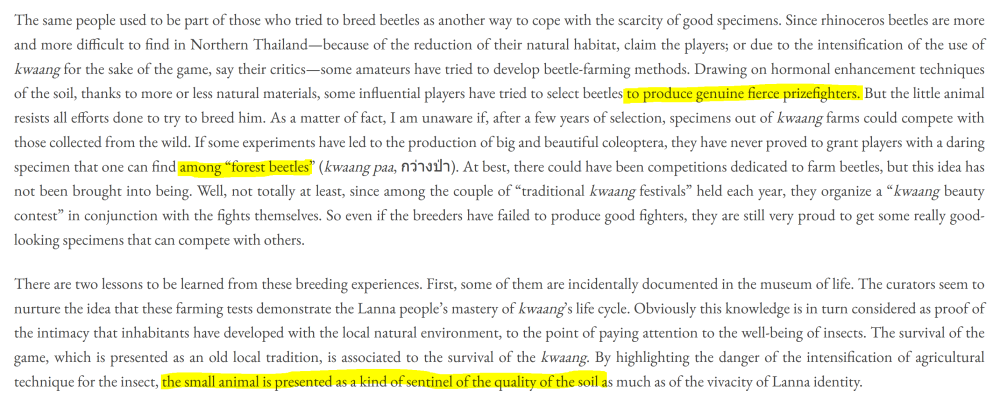
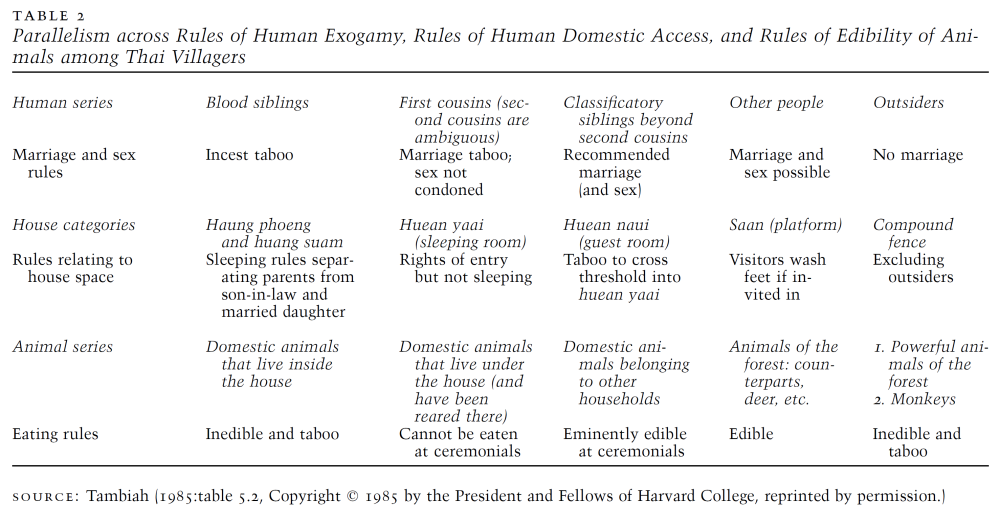
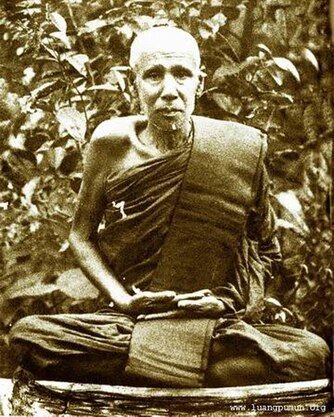
.thumb.jpg.689c1116e0a9cd49655fd57bb743af73.jpg)




